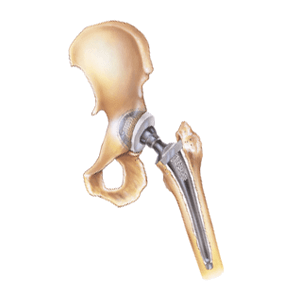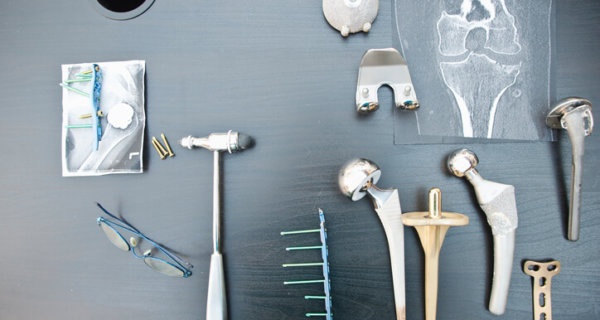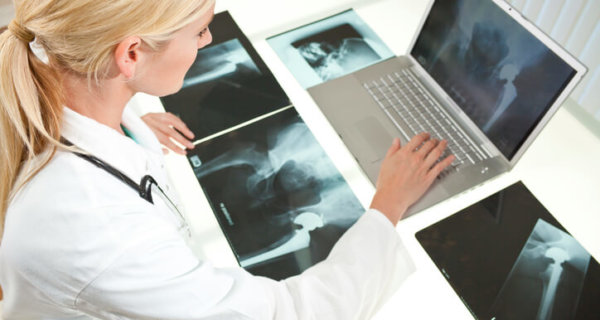Stryker Hip Replacement Side Effects & Complications
 The Stryker LFIT Anatomic CoCr V40™ Femoral Head is one TMZF titanium alloy component in a total hip replacement system. This ball-shaped artificial hip implant was designed to be 20% stronger than other titanium alloys and last for 10-20 years. Unfortunately, an unexpectedly high number of patients have reported life-threatening Stryker hip replacement side effects, such as taper lock failure. Many of those injured LFIT V40 patients are now filing lawsuits.
The Stryker LFIT Anatomic CoCr V40™ Femoral Head is one TMZF titanium alloy component in a total hip replacement system. This ball-shaped artificial hip implant was designed to be 20% stronger than other titanium alloys and last for 10-20 years. Unfortunately, an unexpectedly high number of patients have reported life-threatening Stryker hip replacement side effects, such as taper lock failure. Many of those injured LFIT V40 patients are now filing lawsuits.
These plaintiffs allege Stryker’s modular, interchangeable components are prone to premature failure rates typical of metal-on-metal monoblock total hip replacements. In August 2016, Stryker voluntarily recalled all LFIT V40 components made before 2011 due to catastrophic taper lock failure reports. A combination of Stryker hip replacement side effects leads to implant failure.
Commonly Reported Stryker Hip Replacement Side Effects
Patients with an artificial hip replacement experience some discomfort around the implantation site, but chronic pain is a bad sign. Dangerous Stryker hip replacement side effects may include:
- Bone chipping and loss
- Metal poisoning (also known as metallosis)
- Soft-tissue necrosis
- Loss of mobility
- Dislocation and/or fracture
- Chronic, severe joint pain
- Corrosion
- Formation of cysts/pseudotumors
- Bone tissue deterioration/osteolysis
- Revision surgery
Studies show patients with metal-alloy hip replacement systems often display worsening health complications within three years of implantation. One Orthopedics study found 1 in 10 metal-on-metal hip implant patients require revision surgery within three years. Notably, the AAHKS says that in 80-85% of patients, a total joint replacement should last for 20 years. Further, they state that “implants used can also fail over time due to wear of the bearing components or loosening of the components from the bone, both of which usually occur over many years.”
Timeline of Stryker Hip Replacement Side Effects
The most worrying Stryker hip replacement side effects occur at least three months after device implantation. Of course patients should look out for typical post-surgery issues, like infection, pain, swelling, excessive bleeding or blood clots. More troubling are complications such as numbness/weakness (may indicate nerve damage), dislocation (i.e., the ball slipping out of the socket), and difference in leg lengths after healing. If you hear a popping noise, noticeably limp, or have constant pain/swelling near the hip joint, visit your doctor. A diagnostic test and scan can help quickly determine whether your condition requires revision surgery to correct.
Corrosion can occur at the taper lock site (i.e., where the hip joint connects to your femur), leaking metal ions into your bloodstream. Over time, the concentration of microscopic particles causes metal blood toxicity, also known as metallosis. Eventually, this corrosion erodes the artificial hip component where metal-on-metal parts rub together, causing the implant to loosen and break. You may also suffer from soft tissue necrosis, meaning the tissue surrounding around your artificial hip implant dies. Other metallosis complications may include severe headaches, mental cognitive impairment and emotional imbalance as well as various nervous system issues. The most common complication is osteolysis, which means your body treats the implant as a foreign object and tries to dissolve or expel it altogether. Studies show that osteolysis causes bone loss around the implant and accounts for over 75% of all hip replacement failures.
Revision Surgery Required for Stryker Hip Failure Patients
If your Stryker LFIT V40 femoral implant fails prematurely, the only way to repair or replace it is through revision surgery. Research shows that revision surgery is relatively infrequent – statistically, approximately 18 of every 100 hip replacements fail. Defective hip replacement component design or metal-on-metal fabrication can increase the odds of premature implant failure. In some cases, you may need a bone graft to help rebuild lost bone content after hip prosthetic failure. Ensure that you’re well-informed about the risks, benefits, and types of materials available with your doctor before undergoing hip arthroplasty. Thoroughly reviewing your options may help you avoid Stryker hip replacement side effects and life-threatening complications a few years later.
Get Compensated for Stryker Hip Replacement Side effects
Many injured patients with defective implants may qualify for a cash settlement from the device’s manufacturer. If you suffered Stryker hip replacement side effects after implantation, click the button below now to check your eligibility for compensation. Once you’ve completed your free case review, an experienced attorney will call to discuss how to get the justice and compensation you deserve.
Check your eligibility for compensation.
If you or a loved one received a Stryker LFIT V40 hip replacement implant and later experienced life-threatening complications, you may be entitled to compensation from the manufacturer. Request your free case evaluation now to see if you may qualify.




